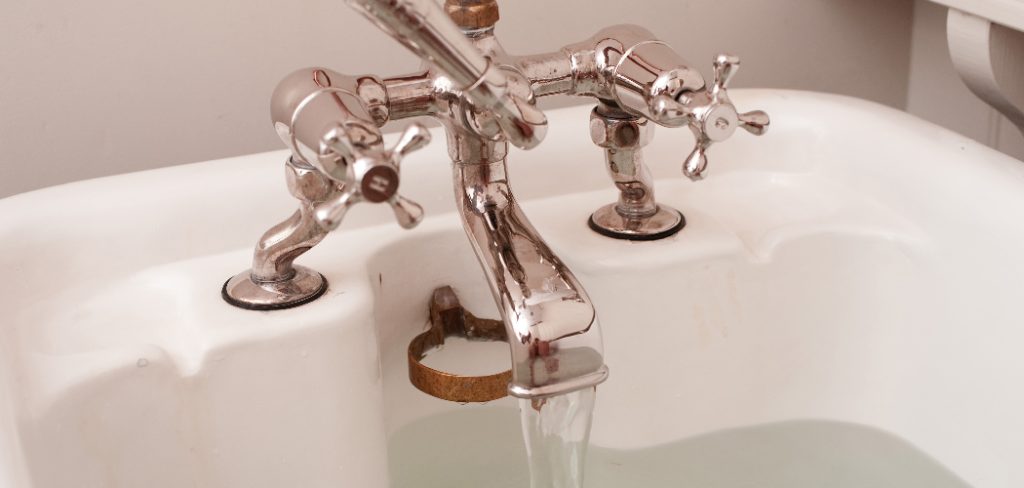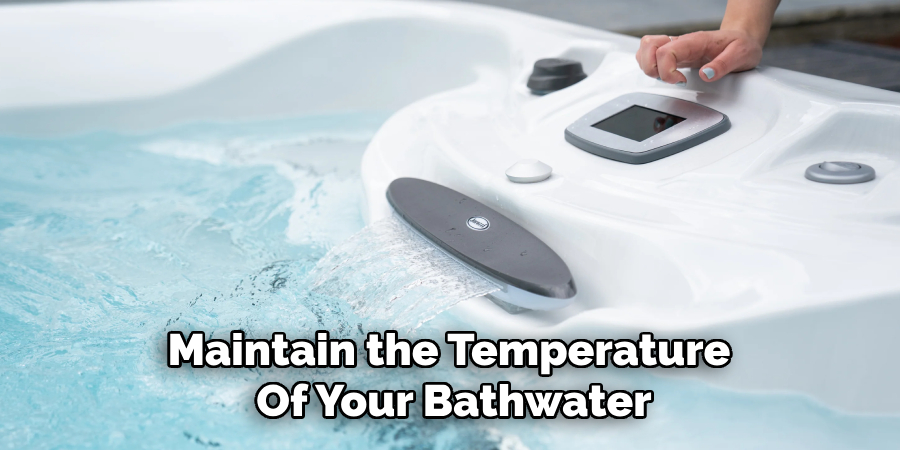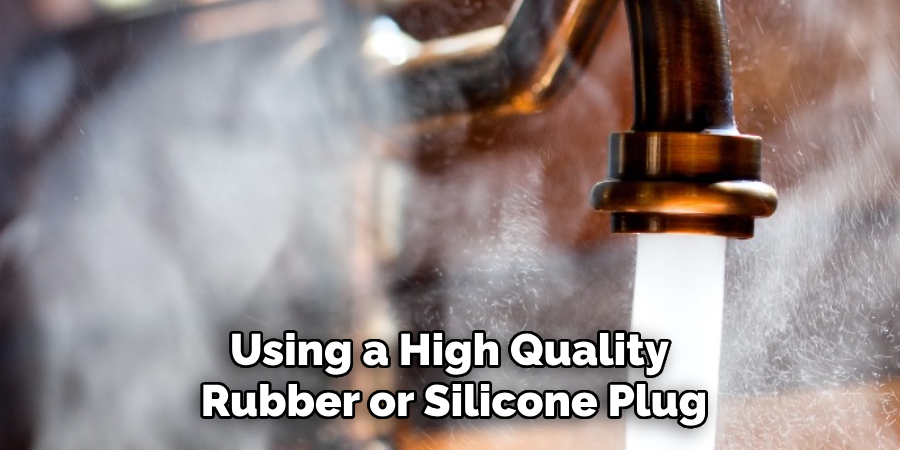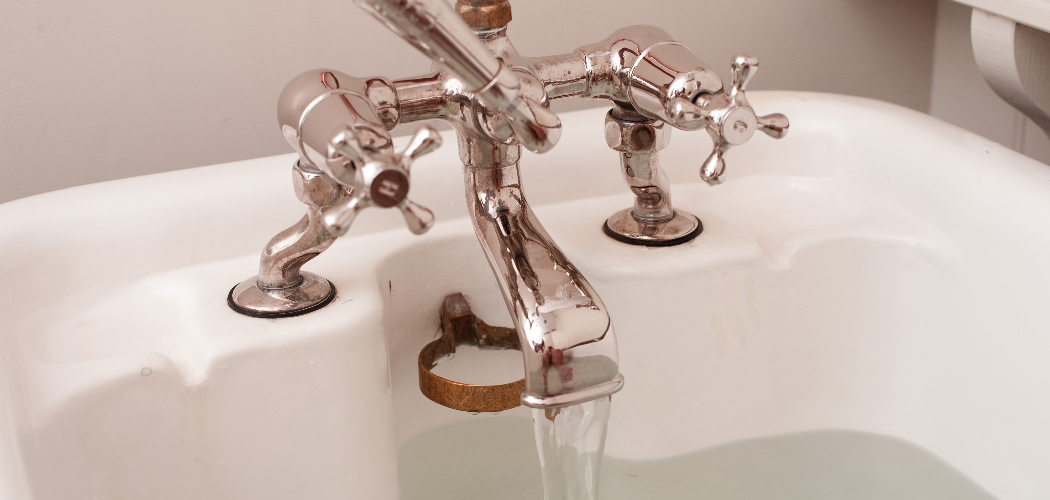Keeping your bathtub water hot can greatly enhance your bathing experience, turning a simple soak into a luxurious retreat. As temperatures drop, or if you’re simply looking to extend your relaxation time, it’s important to understand a few strategies that can help maintain the warmth of your bathwater.

In this guide on how to keep your bathtub water hot, we’ll explore practical tips and techniques that can ensure you enjoy a consistently warm bathing experience, providing you with the ultimate comfort and relaxation. Whether you’re filling your tub for a quick rinse or an indulgent soak, these methods will help you retain that soothing heat for longer.
What is the Ideal Temperature for Bathwater?
The ideal temperature for bathwater typically falls between 98°F to 104°F (37°C to 40°C). This range is considered comfortable for most individuals, allowing for relaxation without causing overheating or discomfort. For those seeking a rejuvenating soak, water at the upper end of this spectrum can invigorate the senses and relieve muscle tension.
However, it’s vital to test the water temperature before getting in, as personal preferences can vary significantly. Adding a few cooler or warmer elements can help achieve the perfect balance, making your bathing experience both pleasant and soothing.
Why Does Bathwater Cool Down?
As warm water circulates in your bathtub, it gradually loses heat to the surrounding environment. The rate of cooling is affected by several factors such as room temperature, air movement, and the material of your tub. For example, a metal tub will lose heat faster than an acrylic one.
Other factors that can contribute to bathwater losing its warmth include extended exposure to cold air or drafts from open windows or doors, as well as inadequate insulation around pipes leading to the tub.

Needed Materials
Bathtub Plug or Stopper:
In order to keep your bathwater hot, you will need a means of preventing water from escaping through the drain. A bathtub plug or stopper is essential for this purpose.
Towels:
Having a few towels within reach can come in handy when trying to keep your tub water hot. They can be used to cover any exposed parts of the tub and insulate it from cold air drafts.
Rubber Mat or Bath Pillow:
If you have a hard surface bathtub, consider investing in a rubber mat or bath pillow. These items can provide added insulation and prevent the heat from escaping through the bottom of your tub.
Hot Water Bottle:
A hot water bottle can also be used to help maintain the temperature of your bathwater. Simply fill it with hot water and place it near the drain to trap heat and keep your toes warm while soaking.
Bath Thermometer:
For precise temperature control, consider using a bath thermometer. This device can measure the exact temperature of your bathwater so you can adjust accordingly for optimal comfort.

7 Step-by-step Guidelines on How to Keep Your Bathtub Water Hot
Step 1: Prepare Your Bathroom Environment
Creating a warm and inviting bathroom environment is essential for maintaining the heat in your bathtub water. Start by closing any windows and doors to prevent cold drafts from entering the space. You can also consider using a space heater to elevate the room temperature to a comfortable level before you fill your tub.
Additionally, setting up soft lighting can enhance the overall atmosphere, making your bathing experience feel more relaxing. To further insulate your tub area, lay towels down on nearby surfaces to minimize heat loss and ensure a cozy retreat while you soak.
Step 2: Fill Your Tub with Hot Water
Once your bathroom environment is prepared, it’s time to fill your tub with hot water. Start by turning on the hot water tap, allowing the water to flow at a comfortable speed. Aim for the ideal temperature range of 98°F to 104°F (37°C to 40°C), as this will create a soothing soak. To maintain the heat effectively, it’s beneficial to fill the tub to at least halfway, as a larger volume of water holds heat better than a smaller amount.
If you prefer, you can alternate between hot and cooler water occasionally, ensuring the temperature stays within your comfort zone. Remember to periodically check the water temperature with your bath thermometer, especially if you’re planning for a long soak.
Step 3: Block the Drain with a Bathtub Plug or Stopper
To effectively retain the warmth of your bathwater, it’s crucial to block the drain with a bathtub plug or stopper as soon as you begin filling your tub. This simple but essential step prevents water from escaping and ensures that the heat remains trapped within the basin. Make sure the plug is securely fitted to create a tight seal; any gaps can lead to unwanted heat loss.
Additionally, using a high-quality rubber or silicone plug can further enhance the seal and keep your water warmer for a longer duration. By addressing this aspect right from the start, you’ll significantly prolong the pleasurable warmth of your soak.

Step 4: Use Rubber Mats or Bath Pillows
Incorporating rubber mats or bath pillows into your bathing setup can significantly enhance heat retention while also providing comfort. Rubber mats create an insulating barrier between the tub’s cold surface and the warm water, helping to slow down the heat loss from the bottom of the tub. This added layer of insulation is especially beneficial for those with hard surface bathtubs, as it helps maintain a pleasant temperature throughout your soak.
Additionally, bath pillows offer extra comfort by supporting your head and neck, allowing you to relax without straining while also serving as a slight insulator for the water. When arranging your bathing environment, consider placing these items before you fill the tub, ensuring they are clean and ready for use. By utilizing rubber mats and bath pillows, you can transform your bathing experience into a more luxurious retreat, all while keeping your water warm for longer.
Step 5: Manage Room Temperature
To prevent your bath from cooling down too quickly, try to maintain a consistent room temperature. Consider using a space heater if you feel the room is getting colder and adjust it as needed. Remember, cold drafts are one of the main culprits for heat loss in bathtubs, so be mindful when opening doors or windows. By managing the room temperature effectively, you can help retain more warmth in your tub while enjoying your immersion to the fullest.
Step 6: Use Towels to Insulate Your Tub
Employing towels strategically can significantly enhance the heat retention of your bathwater. By placing towels over the edges of the tub and around any exposed surfaces, you create an insulating layer that helps prevent cold air from directly affecting the water temperature. This method is especially useful during longer soaks, as it minimizes heat loss due to drafts.
Additionally, towels can be used to cover any open areas near the drain, further reducing the chances of heat escaping. For optimal results, consider using thick, absorbent towels that can trap warmth effectively, turning your bathing experience into a cozier and more enjoyable retreat.
Step 7: Add a Hot Water Bottle
Introducing a hot water bottle into your bathing routine can significantly aid in maintaining the warmth of your bathwater. To use one effectively, simply fill the hot water bottle with hot water and strategically position it near the drain or on the side of the tub. This provides an additional source of heat, helping to counteract any cooling that occurs over time.
Be sure to use a hot water bottle that is designed for bath use, as these are typically made with materials that can withstand high temperatures and prevent leaks. Not only does this technique help keep your bath warmer for longer, but it also ensures that you enjoy a comfortable and soothing soak without interruption.

Additional Tips and Tricks for a Warm Bath Experience
- Consider using bath oils or salts to add a soothing fragrance to your bath while also providing an insulating layer to trap heat.
- For an even warmer experience, try adding a few drops of essential oils with warming properties such as cinnamon or ginger.
- Utilize bath trays or caddies to keep your book, phone, or other items within reach without having to leave the warmth of your tub.
- If you have a detachable showerhead, use it to top up hot water occasionally during longer soaks.
- Remember to stay hydrated by keeping a glass of water nearby and sipping on it while you soak.
- Before getting into the bath, spend some time stretching and relaxing your body to fully reap the benefits of your warm bath experience.
With these tips and tricks on how to keep your bathtub water hot in mind, you can elevate your bathing routine and create a warm and cozy oasis for yourself. Whether you’re looking to unwind after a long day or seeking a little self-care, these simple steps can help enhance the warmth and comfort of your bath experience.
Conclusion
By following these steps on how to keep your bathtub water hot, you can effectively keep your bathtub water hot for a more enjoyable and luxurious bathing experience. From preparing your bathroom environment to using different strategies for heat retention, there are various ways to ensure that your bathwater stays warm and inviting throughout your soak.
By incorporating these tips into your routine, you can elevate your self-care practices and indulge in a relaxing bathing experience whenever you need it. Remember that small adjustments can make a significant difference in maintaining the warmth of your bathwater, so don’t be afraid to experiment and find what works best for you. Start implementing these steps and transform your next bath into a cozy retreat that leaves you feeling rejuvenated and refreshed. Happy soaking!

